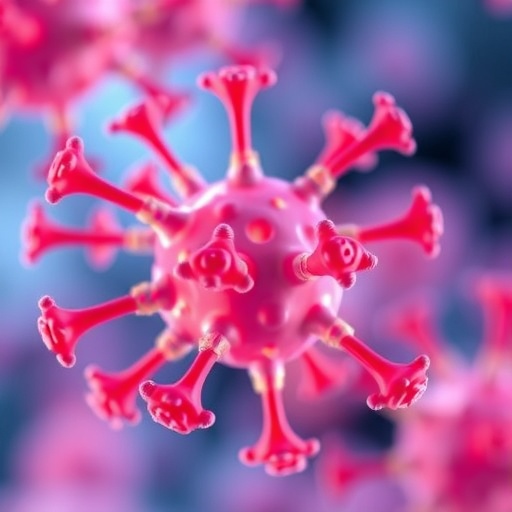In an exciting innovation within the field of battery technology, researchers have made significant strides in repairing spent lithium iron phosphate (LiFePO4) batteries. These batteries, commonly used in electric vehicles and renewable energy storage systems, represent one of the most popular choices due to their stability, safety, and performance. However, as with many technologies, the inevitable degradation over time has posed challenges. The latest research led by Liu, Cheng, and Tian introduces a groundbreaking method that not only repairs these spent batteries but does so in a single, efficient step.
The conventional methods of handling spent batteries typically involve complex processes that can be both time-consuming and resource-heavy. Recycling spent batteries is critical to sustainability, yet the standard approaches have not always been efficient. This new technique aims to change the narrative, providing a user-friendly, scalable method tailored to bring life back into aging LiFePO4 cells.
Liu and his team have harnessed a unique multifunctional organic lithium salt. This reagent showcases remarkable efficacy in addressing the issues of battery capacity loss and cycling failures that typically plague LiFePO4 cells. Their research highlights how this salt operates not only as a lithium source but also facilitates the structural recovery of the electrode material. This dual functionality is pivotal, marking a shift from traditional repair methods that often rely on multiple steps or diverse chemicals.
.adsslot_MawgX0PxL1{ width:728px !important; height:90px !important; }
@media (max-width:1199px) { .adsslot_MawgX0PxL1{ width:468px !important; height:60px !important; } }
@media (max-width:767px) { .adsslot_MawgX0PxL1{ width:320px !important; height:50px !important; } }
ADVERTISEMENT
One of the standout aspects of the research is the demonstration of how the multifunctional organic lithium salt interacts with the spent cathode material at a molecular level. The results reveal that the salt effectively reinstates the electrochemical properties of the LiFePO4, allowing it to regain considerable capacity without the need for a complete dismantling of the battery. This molecular interaction is meticulously documented, shedding light on the potential for enhanced performance characteristics in previously unusable batteries.
The practical implications of this research are profound, especially when considering the increasing demand for sustainable energy solutions. As more consumers and industries look towards electric vehicles and energy storage units, the pressure on battery production and disposal systems intensifies. Liu’s method provides a feasible route not only to prolonging the lifespan of existing battery technology but also to reducing the environmental impact associated with battery disposal.
Moreover, this approach stands to simplify the recycling process. By facilitating direct one-step repair, the technique can potentially lower costs associated with battery refurbishment. This economic advantage could drive broader adoption among manufacturers and consumers alike, paving the way for a more sustainable future for battery usage.
An exciting aspect that should not be overlooked is the scale of application for this technology. The research suggests that the method could be adapted easily for use in various battery formats and for other lithium-based chemistries. Such versatility opens avenues for advancements in a plethora of fields, from consumer electronics to larger-scale applications in renewable energy systems.
Further investigation will undoubtedly continue to explore the long-term effects of using multifunctional organic lithium salts across different battery chemistries. The ongoing research promises to yield insights that could enhance our understanding of battery repairs at large, potentially leading to innovations that could shape future energy-storage solutions.
As this research progresses, it is poised to spark conversations about sustainability practices in tech industries—particularly in the electric vehicle sector, where battery life and recycling are central topics in corporate responsibility and innovation discussions. The need for cleaner, more efficient battery technology is pressing, and Liu’s findings may serve as a catalyst for further advancements in creating more environmentally friendly energy storage options.
In summary, Liu, Cheng, and Tian’s work represents a crucial step forward in developing practical solutions for battery challenges while contributing to sustainable practices. Their method promises to redefine how industries view spent batteries, shifting from waste to opportunity. With rapid advancements in technology and growing environmental awareness, this research may inspire future innovations that further the field of energy storage in positive directions.
In conclusion, the potential applications of this research stretch beyond immediate battery repair. It invites broader discussions around waste management in technology and resonates with the ever-important goal of creating a circular economy in energy storage solutions. As such, Liu and his team’s pioneering method stands as a testament to the innovative spirit driving advancements in sustainable energy—crucial not only for the industry but for global ecological health.
With compelling insights and promising findings, this research is a prime example of how scientific exploration can lead to practical solutions that benefit both the economy and the environment, ensuring that the future of energy storage is bright.
Subject of Research: Battery repair and recycling
Article Title: Direct one-step repair of spent LiFePO4 with a multifunctional organic lithium salt
Article References: Liu, J., Cheng, W., Tian, S. et al. Direct one-step repair of spent LiFePO4 with a multifunctional organic lithium salt. Ionics (2025). https://doi.org/10.1007/s11581-025-06579-5
Image Credits: AI Generated
DOI: https://doi.org/10.1007/s11581-025-06579-5
Keywords: Battery technology, lithium iron phosphate, sustainable energy, recycling, electrochemistry, multifunctional organic lithium salt, energy storage solutions, electric vehicles, environmental impact, circular economy.
Tags: advanced battery recycling techniquesbattery degradation repaircapacity loss in batteriesefficient battery repair methodselectric vehicle battery technologyelectrode material recoveryinnovative battery technologiesLiFePO4 battery recyclinglithium iron phosphate recoverymultifunctional organic lithium saltrenewable energy storage systemssustainable battery solutions






